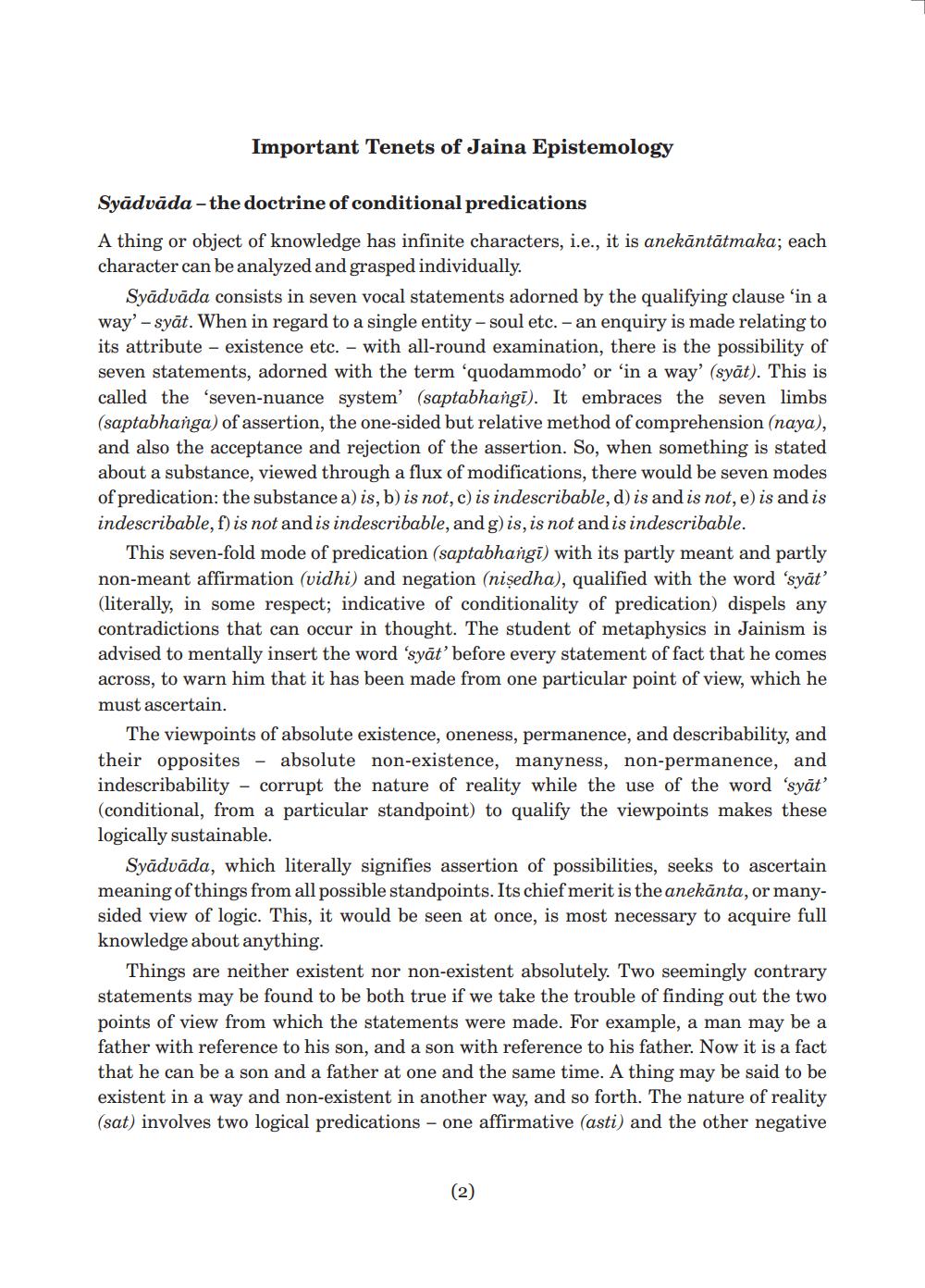________________
Important Tenets of Jaina Epistemology
Syādvāda - the doctrine of conditional predications A thing or object of knowledge has infinite characters, i.e., it is anekāntātmaka; each character can be analyzed and grasped individually.
Syadvāda consists in seven vocal statements adorned by the qualifying clause 'in a way' - syāt. When in regard to a single entity - soul etc. - an enquiry is made relating to its attribute - existence etc. - with all-round examination, there is the possibility of seven statements, adorned with the term 'quodammodo' or 'in a way' (syāt). This is called the 'seven-nuance system' (saptabhangi). It embraces the seven limbs (saptabhanga) of assertion, the one-sided but relative method of comprehension (naya), and also the acceptance and rejection of the assertion. So, when something is stated about a substance, viewed through a flux of modifications, there would be seven modes of predication: the substance a) is, b) is not, c) is indescribable, d) is and is not, e) is and is indescribable, f) is not and is indescribable, and g) is, is not and is indescribable.
This seven-fold mode of predication (saptabhangi) with its partly meant and partly non-meant affirmation (vidhi) and negation (nişedha), qualified with the word 'syāt' (literally, in some respect; indicative of conditionality of predication) dispels any contradictions that can occur in thought. The student of metaphysics in Jainism is advised to mentally insert the word 'syāt' before every statement of fact that he comes across, to warn him that it has been made from one particular point of view, which he must ascertain.
The viewpoints of absolute existence, oneness, permanence, and describability, and their opposites - absolute non-existence, manyness, non-permanence, and indescribability - corrupt the nature of reality while the use of the word 'syāt' (conditional, from a particular standpoint) to qualify the viewpoints makes these logically sustainable.
Syādvāda, which literally signifies assertion of possibilities, seeks to ascertain meaning of things from all possible standpoints. Its chief merit is the anekānta, or manysided view of logic. This, it would be seen at once, is most necessary to acquire full knowledge about anything.
Things are neither existent nor non-existent absolutely. Two seemingly contrary statements may be found to be both true if we take the trouble of finding out the two points of view from which the statements were made. For example, a man may be a father with reference to his son, and a son with reference to his father. Now it is a fact that he can be a son and a father at one and the same time. A thing may be said to be existent in a way and non-existent in another way, and so forth. The nature of reality (sat) involves two logical predications - one affirmative (asti) and the other negative
(2)




